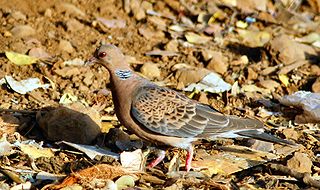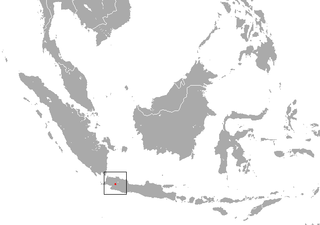Related Research Articles

Platanus is a genus consisting of a small number of tree species native to the Northern Hemisphere. They are the sole living members of the family Platanaceae.

The green bee-eater, also known as little green bee-eater, is a near passerine bird in the bee-eater family. It is resident but prone to seasonal movements and is found widely distributed across sub-Saharan Africa from Senegal and the Gambia to Ethiopia, the Nile valley, western Arabia and Asia through India to Vietnam. They are mainly insect eaters and they are found in grassland, thin scrub and forest often quite far from water. Several regional plumage variations are known and several subspecies have been named.

Platanus × acerifolia, the London plane, London planetree, or hybrid plane, is a tree in the genus Platanus. It is often known by the synonym Platanus × hispanica. It is usually thought to be a hybrid of Platanus orientalis and Platanus occidentalis. Some authorities think that it may be a cultivar of P. orientalis.

The Oriental turtle dove or rufous turtle dove is a member of the bird family Columbidae. The species has a wide native distribution range from Europe, east across Asia to Japan. The populations show variations in the patterning of plumage and have been designated into at least six named subspecies. Populations in the higher latitudes tend to migrate south in winter, while those closer to the tropics are sedentary. Vagrants have been recorded in North America. The species is predominantly granivorous and forages on the ground.

Platycladus is a monotypic genus of evergreen coniferous trees in the cypress family Cupressaceae, containing only one species, Platycladus orientalis, also known as Chinese thuja, Oriental arborvitae, Chinese arborvitae, biota or Oriental thuja. It is native to northeastern parts of East Asia and North Asia, but is also now naturalised as an introduced species in other regions of the Asian continent.

Synaxarion or Synexarion is the name given in the Eastern Orthodox, Oriental Orthodox and Eastern Catholic Churches to a compilation of hagiographies corresponding roughly to the martyrology of the Roman Church.

Thenus orientalis is a species of slipper lobster from the Indian and Pacific oceans.

The Oriental shrew is a species of mammal in the family Soricidae. It is endemic to Indonesia. It is threatened by habitat loss.

The Javan ferret-badger is a mustelid endemic to Java and Bali, Indonesia. It is listed as Least Concern on the IUCN Red List and occurs from at least 260 to 2,230 m elevation in or close to forested areas.

The Sekukhune flat lizard is a species of lizard in the family Cordylidae. The species is endemic to South Africa. It has two subspecies.
Under Pope Pius XII, there were the several reforms of Oriental canon law and the Codex Iuris Canonici Orientalis, applying mainly to the Oriental Churches united with the Latin Church in communion with the Roman Pontiff. The Holy See's policy in this area had always two objectives, the pastoral care of approximately ten million Christians united with Rome and the creation of positive ecumenical signals to the two-hundred and fifty million Eastern Orthodox Christians outside the Church of Rome.

Trema orientalis is a species of flowering tree in the hemp family, Cannabaceae. It is known by many common names, including charcoal-tree, Indian charcoal-tree, pigeon wood, Oriental trema, and in Hawaii, where it has become naturalized, gunpowder tree, or nalita. It has a near universal distribution in tropical and warm temperate parts of the Old World, with a range extending from South Africa, through the Middle East, the Indian subcontinent and southern China to Southeast Asia and Australia.
Orientalis Ecclesiae is an encyclical of Pope Pius XII signed on 9 April 1944. Its topic is St. Cyril, Patriarch of Alexandria.

The eastern carrion crow is a member of the crow family and a subspecies of the carrion crow. Differences from the nominate subspecies include a larger size, at a length about 500 millimetres (20 in), and more graduated outer tail feathers. The eastern carrion crow is found in Siberia from the Yenisei to Japan, south to Central Asia, Afghanistan, Eastern Iran, Kashmir, Tibet and northern China. They generally lay three to five eggs in trees or buildings. The eggs show no difference from the nominate subspecies.

Pterolophia is a genus of longhorn beetles of the subfamily Lamiinae, containing the following species:
Kwangsisaurus is an extinct genus of a basal pistosauroid known from the Early or Middle Triassic of Guangxi, southern China. It contains a single species, Kwangsisaurus orientalis.
Pterolophia instabilis is a species of beetle in the family Cerambycidae. It was described by Per Olof Christopher Aurivillius in 1922. It is known from Seychelles.
Pterolophia guineensis is a species of beetle in the family Cerambycidae. It was described by James Thomson in 1864, originally under the genus Alyattes.
References
- ↑ BioLib.cz - Pterolophia orientalis. Retrieved on 8 September 2014.